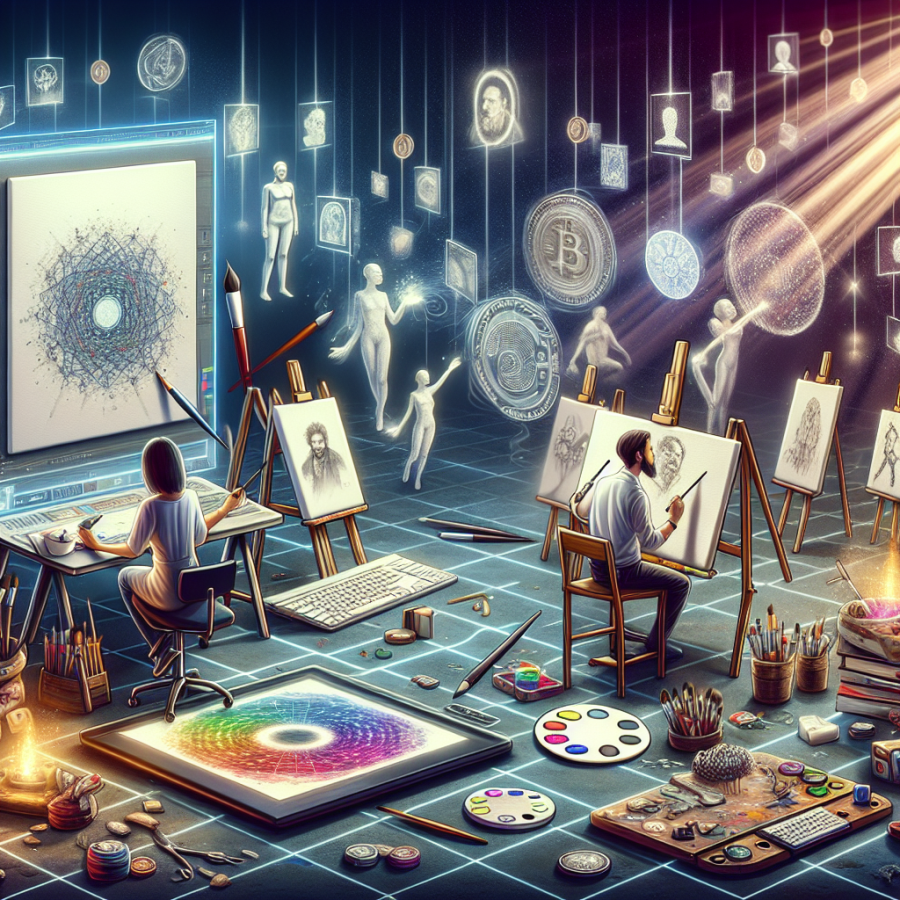NFTs as a New Frontier for Creative Expression and Ownership
In the dynamic realm of digital art and online collectibles, Non-Fungible Tokens (NFTs) have emerged as a groundbreaking development, granting creators the ability to assert their ownership over unique digital items and artworks. NFTs stand out from other cryptographic assets due to their unique properties; each token is distinct and cannot be exchanged on a one-to-one basis, making them perfect for representing individual artistic pieces. This distinctive trait ensures the provenance and exclusivity of digital creations, which, prior to the emergence of NFTs, remained a challenging issue in the digital domain.
Artists across various genres have begun to embrace NFTs as a platform to monetize their work, circumventing the traditional models which often involve intermediaries such as galleries, agents, or publishing platforms. By doing so, they are not only able to achieve greater financial gains but also maintain closer connections with their audiences. The NFT framework supports artists to release their work directly to the public, fostering a more intimate and direct economic relationship with their patrons that was previously unattainable through conventional art market channels.
Moreover, NFTs have catalyzed new forms of artistic ventures, enabling artists to offer more than just the artwork itself. Some innovators in the space are embedding experiences, such as exclusive access to events or future works, as part of the NFT, offering additional value to the collector. This has led to the fusion of art, technology, and experience, further expanding the horizon of creative expression.
From a demand perspective, collectors see NFTs as an opportunity to support their favorite artists while securing a piece of digital history. As the concept of digital asset collection gains mainstream acceptance, the perceived value of these tokens will likely increase, particularly for works by renowned artists or those that mark significant cultural moments.
The technology underpinning NFTs is equipping creators with novel methods of asserting their copyrights and maintaining ownership records. Smart contracts — self-executing contracts with the terms written into code — are deployed alongside NFTs, ensuring that artists can automatically receive royalties whenever their work is resold. This feature introduces a sustainable revenue model, especially for digital artists who historically received a one-time payment for their creations, without any subsequent benefits from future transactions.
However, this new frontier is not without its challenges.
Read also:
Ascending Alone: The Thrills and Risks of Solo Climbing
Exploring the Intersection of Art and Blockchain Technology
The fusion of art and blockchain technology has paved the way for a novel paradigm in the creative industry, one that is especially manifested in the form of Non-Fungible Tokens (NFTs). These digital assets, unique and uninterchangeable, have transformed the way artists can monetize their work, interact with their audience, and protect their intellectual property.
At the core of these artist-endorsed NFT ventures is the principle of authenticity and ownership. NFTs, built on blockchain technology, ensure that an artwork’s provenance and the original creator's ownership rights are irrefutably linked to the piece. This immutable connection empowers artists to release their works with a newfound sense of security in digital spaces, which historically have been fraught with issues such as piracy and unauthorized reproductions.
Furthermore, NFTs open up a dynamic revenue stream. In traditional art sales, artists typically receive proceeds only from the initial sale. However, NFTs can be programmed with smart contracts that ensure that artists receive royalties from secondary sales in perpetuity. This not only assures continuous compensation but also solidifies the artist's stake in the appreciating value of their work.
NFTs also endorse a tighter-knit relationship between artists and their fan base. Through blockchain, artists can provide purchasers with exclusive ownership rights, behind-the-scenes content, or even participatory experiences that deepen the connection between the creator and consumer. These personalized tokens grant fans more than just a piece of artwork; they offer a share in the creative journey.
Moreover, the technology extends beyond just visual arts. Musicians, filmmakers, and performance artists are increasingly using NFTs to distribute content and engage audiences. With the capacity to tokenize any form of digital content, the opportunities for creative expression and collaboration are virtually limitless.
Despite the enthusiasm, the merge of art and blockchain does raise questions and challenges. Chief among them are environmental concerns since the maintenance of some blockchain networks requires significant energy consumption. Moreover, navigating the complex and often volatile NFT market can be daunting for traditional artists and buyers alike. Proper education and easy access to user-friendly platforms are vital in ensuring that the benefits of this innovation are not overshadowed by its barriers.
In embracing NFTs, artists can unleash their creativity in unprecedented ways, extending their artistic expression into the digital realm.




